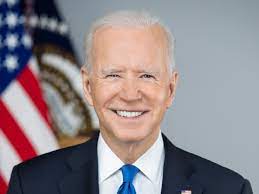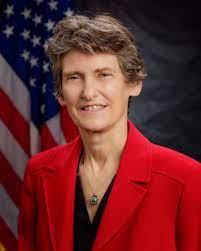Homepage Slider, Water Quality
$1 Billion Investment in Great Lakes Clean-up
By Dusty Sonnenberg, CCA, Ohio Field Leader, a project of the Ohio Soybean Council and soybean check-off.
On Thursday, President Joe Biden and the U.S. EPA Administrator were in Ohio to announce a $1 Billion Investment from the Bipartisan Infrastructure Law aimed at accelerating the clean-up and restoration of Areas of Concern (AOC), tied to the Great Lakes.

The EPA plans to use a majority of the funds for President Biden’s America the Beautiful initiative.
“The Great Lakes are a vital economic engine and an irreplaceable environmental wonder, supplying drinking water for more than 40 million people, supporting more than 1.3 million jobs, and sustaining life for thousands of species. Through the investments from President Biden’s Bipartisan Infrastructure Law, we will make unprecedented progress in our efforts to restore and protect the waters and the communities of the Great Lakes basin,” said EPA Administrator Michael S. Regan.
The EPA projects that the Bipartisan Infrastructure Law funding, combined with funds from annual Great Lakes Restoration Initiative appropriations and funding from other sources, will enable the Agency and its partners to bring work to completion across 22 of the 25 remaining AOCs, between now and the end of 2030, with Bipartisan Infrastructure Law funding directly supporting 11 of these sites.
The Great Lakes AOCs where work is expected to be completed by 2030 include four rivers in Ohio including the Ashtabula River, Black River, Cuyahoga River, and Maumee River.
In 1987, the Great Lakes Water Quality Agreement designated 43 sites in the United States and Canada with significant environmental degradation as AOCs in need of restoration. Thirty-one of these sites were in the United States. For more than two decades, plans were drafted to address the contamination but, in the absence of significant funding to undertake the work, there was little progress. In 2010, the Great Lakes Restoration Initiative was implemented and generated the largest ever federal investment in the Great Lakes.
“This is a historic opportunity to invest significant resources in these polluted sites,” said Janet McCabe, Deputy Administrator of the United States EPA. “Areas of concern are sites with extraordinary legacy industrial pollution that impacts both the economic opportunities and economic health of the area.

The $1 Billion will help the EPA and our partners to accelerate the clean-up of these sites so 22 of them can be fully cleaned up by 2030 and the remaining three will be well on their way.”
“The Great Lakes Restoration Initiative is a program that receives annual funding to deal with issues such an algal blooms and nutrient loading. This $1 Billion will be used in conjunction with those existing funds to help those funds go further,” said McCabe. “This additional infrastructure money allows us to accelerate the good work already being done.”
When it comes to benefits for agriculture, McCabe says the ability to get contaminated sediments out of those designated rivers is going to be impactful to those ecosystems and the opportunities that those special areas provide to the communities around them.
In 2010, the Great Lakes Restoration Initiative was implemented and generated the largest ever federal investment in the Great Lakes. Over the last 16 years, EPA has been able to delist six AOCs and complete the necessary management actions at eleven additional AOCs.
In the near future, the EPA plans to release more details about the implementation of the Bipartisan Infrastructure Law funding for the Great Lakes.